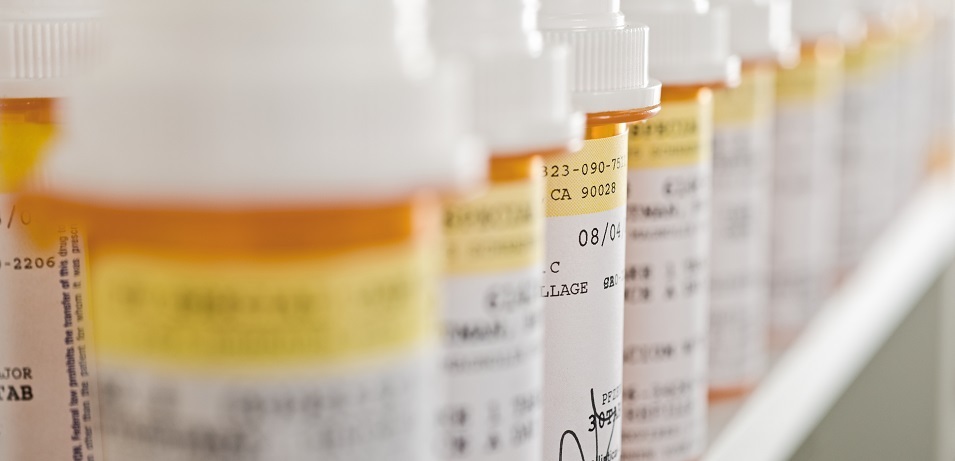
All over Facebook, you’ll see these posts by well-meaning, health-conscious people: an inspirational photo, perhaps a river, or a forest, or a sunset—something peaceful. It catches your eye as you scroll through your feed, not just because of the image but because of the words, superimposed overtop, something like “Nature is the best antidepressant.”
This type of meme, one that disparages antidepressants or other medications for mental illness (and the people who take them), is alarmingly common on social media. These memes tend to focus on nature, exercise, or natural remedies as an alternative to antidepressants, and most of them seem relatively benign. Nothing is wrong with going for a walk in nature, after all.
But others are more aggressive—calling these medications poison, or worse, and claiming that those who take them are weak. Some memes even spread the viewpoint that you cannot hold Christian or other religious beliefs if you’re taking these medications.
While memes are rarely a good source of information, if we’re exposed to them frequently enough they often take root in our minds. But if you’re one of those people who has had to take antidepressants or antipsychotics, they may cause you very real psychological harm at a time when you’re already in a precarious state of mental health.
It would be impossible to report all of these memes or remove them from Facebook—they are, unfortunately, a part of our social media landscape. What we can do, though, is spread accurate information about antidepressants and other medications for mental illnesses, and challenge misinformation and stigma when we find it.
And in order to do so, we need to properly understand the nature of mental illness and the history of the medications we use to treat them.
Our brains are neurochemical machines. If we feel something in our brains, it’s because a chemical is causing it. Our feelings are made up of these chemicals, called neurotransmitters, and they exist in a delicate balance in our brains.
If the brain has low levels of certain neurotransmitters, it can cause us to experience very negative feelings.
For instance, the neurotransmitter serotonin is responsible for regulating a person’s mood, memory, and behaviour. When we have low serotonin, we tend to experience a condition commonly called depression.
By contrast, if the brain has high levels of other neurotransmitters, it can cause other effects, such as psychosis—for example, seeing or hearing things that aren’t real. These days, this is well understood in the fields of medicine and psychology.
For centuries, however, we were unaware of the neurochemical nature of our brains. Mental health issues were blamed on moral or spiritual causes. Especially in cases where an individual experienced symptoms of psychosis, it was often blamed on demon possession. It was rare for people to seek out other causes. Though there were some who did, such as Muhammad ibn Zakariya al-Razi, a ninth-century Islamic physician who was one of the first in history to suggest viewing mental illness from a medical perspective.
Even into the modern era, when we began to understand that mental illnesses were disorders of the brain, we lacked understanding of the causes. This resulted in a shortage of proper treatment, and even into the twentieth century we often resorted to placing individuals into so-called “asylums.” These institutions did little more than house the individuals who were, in some cases, experiencing such severe psychosis that they were unable to function in daily life. The facilities were underfunded and understaffed. The doctors and nurses did their best, but without proper treatment they could only do so much.
Indeed, mentally ill people were vanishing into these institutions, never to be seen again by their families and friends.
And then an accident happened.
During the 1930s and 1950s, a French pharmaceutical company searched for superior medications for different ailments. They synthesized a variety of chemicals, including thorazine, which was used as a sedative for surgical patients.
However, one French doctor, named Dr. Henri Laborit, took note of some unexpected effects of Thorazine on some surgical patients who also exhibited psychotic symptoms. The medication, in fact, seemed to lessen the effects of their mental illness.
So on January 19, 1952, Laborit administered thorazine to a patient as a primary treatment for psychosis for the first time—and it worked. Other doctors began using thorazine for their psychotic patients, and those patients, too, began to improve.
Antidepressants were discovered by accident around the same time by two American physicians, Dr. Irving Selikoff and Dr. Edward Robitzek. They, too, were searching for something completely different—in their case, an anti-tuberculosis drug—and in the process they discovered that the chemicals they were using seemed to improve the moods of the people taking them.
Two psychiatrists, Dr. Max Lurie and Dr. Harry Salzer, soon learned of this discovery and started administering these chemicals to their patients—and it worked. It worked so well that they came up with a name for this new category of drug: antidepressants.
The news spread and more and more doctors began using these medications, which soon made their way into the asylum system.
The floodgates opened. People housed in these institutions suddenly could be discharged, sent home to their families. In 1950, more than 550,000 people lived in the asylum system in the United States. That number dropped to 337,000 in 1970, 150,000 in 1980, and only 120,000 in 1990. These drops came despite steady increases in the general population.
The discovery of thorazine has been compared to the discovery of penicillin—it changed the landscape of mental health forever. Lives were restored. Asylums were shut down.
It was like a miracle.
This is not to say that these medications don’t have their issues. Thorazine had crippling side effects, and the early antidepressants (which are now classified as MAO inhibitors) sometimes did more harm than good. But it was a start.
Now, we have a better understanding of the drugs we prescribe. Modern antidepressants mostly call into a category called Selective Serotonin Reuptake Inhibitors (SSRIs), which boost the level of serotonin available to the brain and allow people to function in society instead of being institutionalized. While the drugs do have some side effects, they are generally mild.
And despite what the Facebook memes say, these antidepressants are not addictive. In fact, modern antipsychotics are very carefully calibrated and allow many people to maintain normal lives and relationships. Life is better now for people with mental health symptoms—better than it’s ever have been—thanks to these medications.
In one respect, those memes have a kernel of truth. Going out into nature, getting more exercise, and participating in a religious community can all improve our mental health, it’s true. But no amount of jogging can bring your serotonin up to a normal level if it’s greatly depleted. No amount of trees will alleviate the symptoms of psychosis.
Many people need the help offered by medicine and psychology in order to maintain a normal life. This doesn’t make them weak any more than an individual with diabetes is weak for needing insulin. Why would we judge one and not the other?
So when you see memes or other posts on social media that speak negatively about antidepressants or the people who take them, consider taking the opportunity to provide some education. Speak out on behalf of those who may be scrolling by and could be needing help with their mental health. They may need your voice more than you know, and you could be the one who pushes someone to finally seek treatment—treatment that will work. Because from what we’ve learned, the best antidepressant is actually an antidepressant.


















